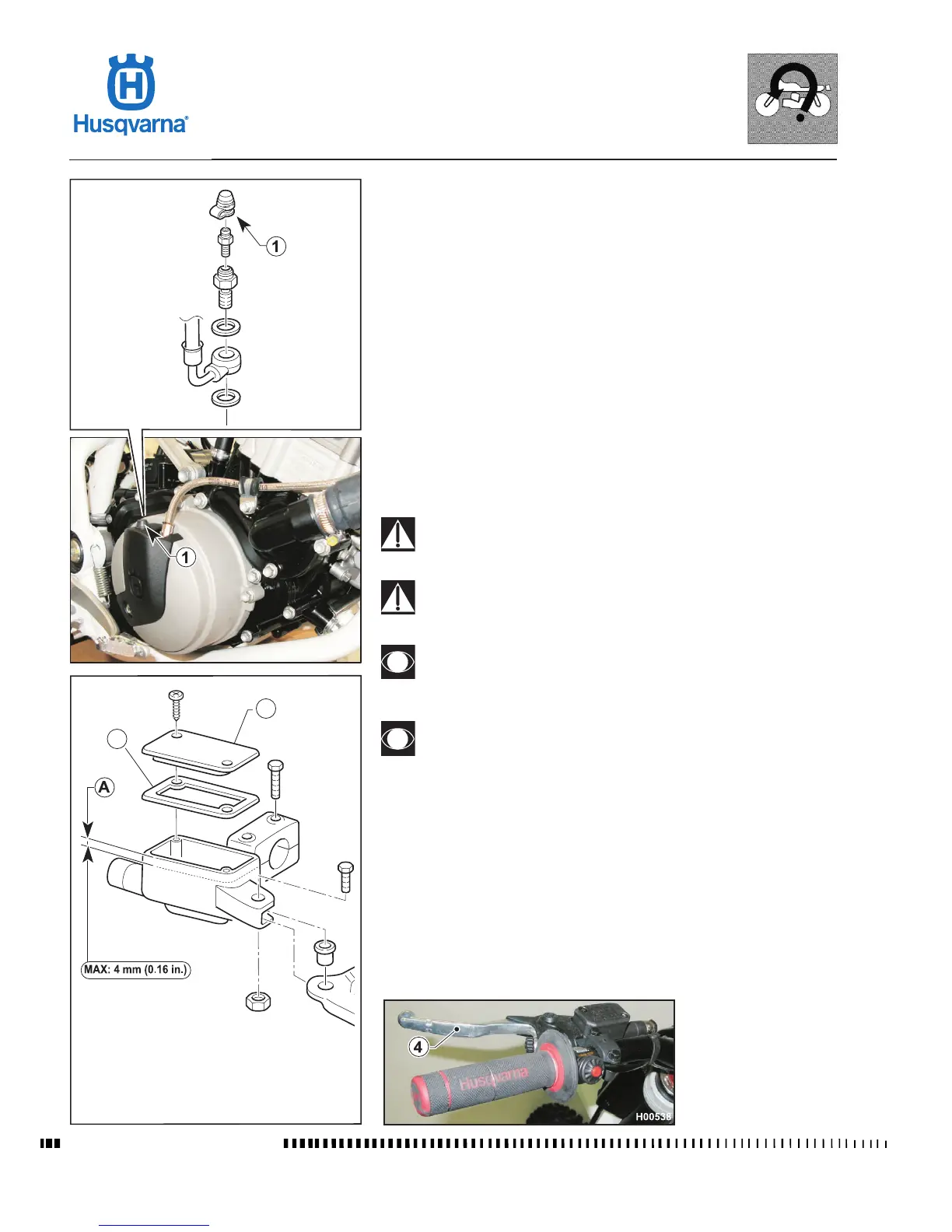Workshop Manual Ed. 03-2012
HYDRAULICALLY CONTROLLED CLUTCH
Bleeding the clutch system
A long travel and mushy feel of the clutch lever indicate that there is air in the
system and the clutch hydraulic system needs bleeding.
Bleeding procedure is as follows:
- Take the rubber cap off the bleed valve (1).
- Attach a clear plastic hose to the bleed valve and place the other end of the
hose in a vessel (make sure the hose end stays dipped in the uid throughout
the procedure).
- Remove the reservoir cover (2) and the rubber diaphragm (3) and ll fresh
uid into the reservoir. Use the uid specied in the lubricant table (see Sec-
tion A).
- Pull the lever (4) and keep it pulled so that the system remains under pres-
sure, loosen the valve (2), tighten the valve (2) always with the lever pulled,
then release the lever.
- Top up the uid level, wait a few seconds, then repeat a few times the proce-
dure described in the line above until the liquid comes out of the transparent
hose without bubbles.
- Lock the valve (1) to the prescribed torque.
- Top up uid level (A) and ret rubber diaphragm (3) and reservoir cover
(2).
Fluid level inside the reservoir shall never drop below the minimum
notch during the bleeding procedure.
Hydraulic uid is corrosive. In the event of contact with eyes, rinse
with abundant water.
Motorcycle handlebar must be turned to the right during the bleed-
ing procedure. This will keep the master cylinder reservoir higher,
making bleeding easier.
Bleed valve tightening torque: 12-16 Nm, 1.2-1.6 Kgm, 8.7-11.6 ft/
lb.

